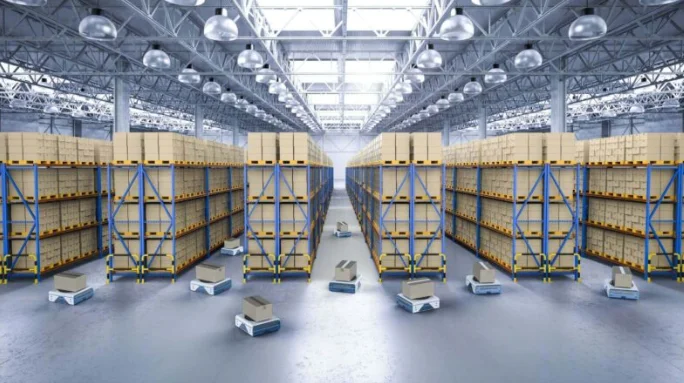Warehousing has experienced a significant transformation over the past few years, driven by technological advancements and changing consumer demands. As we step into 2024, the global supply chain continues to rely on efficient and innovative warehousing practices to meet the increasing demands of e-commerce, manufacturing, and logistics industries.
The future of warehousing promises further evolution, with trends that are reshaping the way businesses manage their storage and distribution operations. For companies looking to stay competitive, understanding and adapting to these trends is crucial for success.
In this article, we explore the key trends and innovations shaping the future of warehousing in 2024, focusing on the role of technology, sustainability, and flexibility. By staying informed and embracing these changes, businesses can improve efficiency, reduce costs, and position themselves for long-term growth.
Automation and Robotics Revolution
One of the most prominent trends in the future of warehousing is the increasing adoption of automation and robotics. Automated warehouses are becoming the norm, with companies integrating robotics and automated storage/retrieval systems (AS/RS) to streamline their operations. This shift towards automation offers numerous benefits, including increased efficiency, reduced labour costs, and minimized human error.
- Warehouse Robots and Cobots: The use of warehouse robots and collaborative robots (cobots) is on the rise, allowing for more seamless operations. Cobots work alongside human workers, assisting in repetitive tasks such as picking, packing, and sorting. This not only improves productivity but also allows human workers to focus on more complex tasks.
- Impact on Workforce: As automation takes over, the role of the workforce is evolving. Workers are transitioning from manual labour to overseeing automated systems and maintaining robotics. This requires new skills and training, creating opportunities and challenges for the workforce in the automated warehousing landscape.
Artificial Intelligence and Machine Learning Integration
Artificial intelligence (AI) and machine learning (ML) are playing a pivotal role in the evolution of warehousing. These technologies are being integrated into various aspects of warehouse management, from inventory control to demand forecasting.
AI-Powered Inventory Management
AI is transforming inventory management by leveraging predictive analytics to forecast demand and optimize inventory levels. By analyzing past data and trends, AI systems can accurately predict when and how much inventory will be needed, reducing the risk of overstocking or stockouts.
Machine Learning for Warehouse Operations
Machine learning algorithms are streamlining warehouse operations by automating decision-making processes. For example, ML can optimize routing within the warehouse, ensuring that products are picked and shipped in the most efficient manner. This helps reduce delays and improves overall operational efficiency.
Sustainable Warehousing Practices
Sustainability is becoming a top priority for businesses across all industries, and warehousing is no exception. As environmental concerns grow, companies are adopting sustainable practices to reduce their carbon footprint and improve their overall environmental impact.
- Green Warehousing: Warehouses are increasingly being designed with sustainability in mind. This includes the use of eco-friendly materials, energy-efficient lighting, and renewable energy sources like solar panels. Green warehousing practices not only reduce environmental impact but also result in cost savings through lower energy consumption.
- Waste Reduction and Recycling: Companies are implementing waste reduction strategies in their warehouses by recycling materials, reducing packaging waste, and minimizing energy consumption. Technology plays a key role in monitoring and managing waste, allowing for more sustainable operations.
- Sustainability Certifications: Achieving sustainability certifications such as LEED (Leadership in Energy and Environmental Design) is becoming a common goal for warehouses. These certifications validate a warehouse’s commitment to eco-friendly practices and can enhance a company’s brand reputation.
Data-Driven Decision Making
Data is the backbone of modern warehousing operations, enabling businesses to make informed decisions and optimize their processes. The rise of big data, combined with advanced analytics, is transforming the way warehouses operate.
Big Data in Warehousing
Warehouses are increasingly relying on real-time data to improve efficiency and transparency throughout the supply chain. By tracking key performance indicators (KPIs) and analyzing data, warehouses can identify areas for improvement and make data-driven decisions.
Warehouse Management Systems (WMS)
Warehouse management systems (WMS) are leveraging data to optimize operations, from inventory tracking to order fulfilment. These systems integrate with IoT (Internet of Things) devices to collect real-time data, enabling better decision-making and improved efficiency.
Predictive Analytics
Predictive analytics is the future of data-driven decision-making in warehouses. By analyzing data trends, warehouses can proactively address potential issues, such as supply chain disruptions or inventory shortages, before they occur.
Cold Chain Warehousing Innovation
Cold chain logistics, which involves the storage and transportation of temperature-sensitive goods, is seeing rapid innovation. The demand for cold chain warehousing is increasing due to the growth of industries like pharmaceuticals, food, and e-commerce.
- Growth of Cold Chain Logistics: The rise in demand for temperature-controlled storage is driving innovation in cold chain logistics. Companies are investing in advanced cold chain technology to ensure that products are stored and transported at the correct temperatures, reducing the risk of spoilage or contamination.
- Smart Refrigeration and Temperature Monitoring: IoT sensors and automated systems are being used to monitor and regulate temperatures in cold chain warehouses. These technologies provide real-time data on temperature conditions, allowing for quick adjustments and ensuring product integrity.
- Emerging Technologies: Blockchain technology is emerging as a key player in cold chain logistics, providing transparency and traceability throughout the supply chain. Innovations in packaging materials are also improving the sustainability of cold chain logistics by reducing waste and improving insulation.
E-commerce and Last-Mile Delivery Demands
The growth of e-commerce is driving significant changes in warehousing and logistics. As consumers demand faster delivery times, warehouses are adapting to meet these new expectations.
- E-commerce-Driven Warehousing: The rise of e-commerce has led to increased demand for warehousing space, particularly in urban areas. To accommodate rapid delivery times, companies are shifting towards smaller, decentralized warehouses that are closer to consumers.
- Last-Mile Delivery Challenges: Last-mile delivery, the final leg of the delivery process, presents unique challenges for warehouses. Meeting consumer expectations for fast and accurate delivery requires innovative solutions, such as micro-fulfilment centres and urban warehouses.
- Role of 3PL Providers: Third-party logistics (3PL) providers are playing a crucial role in helping businesses manage e-commerce-driven warehousing and last-mile delivery. By outsourcing logistics to 3PL providers, companies can focus on their core operations while ensuring efficient and timely deliveries.
Flexible and On-Demand Warehousing
The traditional model of long-term warehouse leases is giving way to more flexible and on-demand warehousing solutions. This trend is particularly beneficial for businesses with fluctuating inventory needs.
The Shift Toward Flexibility
On-demand warehousing services allow businesses to access warehouse space when they need it without the commitment of a long-term lease. This flexibility is especially valuable for companies experiencing seasonal demand or rapid growth.
Shared Warehousing Models
Shared warehousing models, where multiple businesses share warehouse space, are gaining popularity. This collaborative approach reduces costs and provides smaller businesses with access to top-tier warehousing facilities.
Digital Platforms for On-Demand Warehousing
Online platforms are connecting businesses with available warehouse space, making it easier to find and book flexible warehousing solutions. Warehousing as a service (WaaS) is becoming a viable option for companies of all sizes.
Advanced Security and Safety Measures
As warehouses become more automated and data-driven, the need for advanced security and safety measures is growing. Businesses are investing in cutting-edge technologies to protect their assets and ensure a safe working environment.
- Improved Security Systems: Advanced surveillance systems, AI-driven security analytics, and biometric access controls are becoming standard features in modern warehouses. These technologies help prevent theft, protect valuable assets, and enhance overall security.
- Worker Safety Innovations: Wearable technology is being used to monitor worker health and safety in warehouses. Automated safety systems, such as robotic safety features and real-time monitoring, are also helping reduce workplace accidents and ensure compliance with safety regulations.
- Adapting to New Regulations: As safety and security standards evolve, warehouses must adapt to stay compliant. Technology is aiding in this process by automating compliance checks and reducing risks associated with manual oversight.
Partner with a 3PL Logistics Company for Your Warehousing Needs
For businesses looking to stay ahead in the fast-paced world of warehousing, partnering with a third-party logistics (3PL) provider can make all the difference. 3PL Logistics Company offer expertise, advanced technology, and flexible solutions to help businesses manage their warehousing and logistics operations efficiently.
Whether you need help with e-commerce fulfilment, last-mile delivery, or cold chain logistics, a trusted 3PL provider can streamline your operations and improve your bottom line.

Ruby Stauffer is a prominent technology blogger known for her insightful analysis and in-depth reviews of the latest tech trends and gadgets. Her blog has become a go-to resource for tech enthusiasts seeking reliable information and expert opinions on the ever-evolving world of technology.

